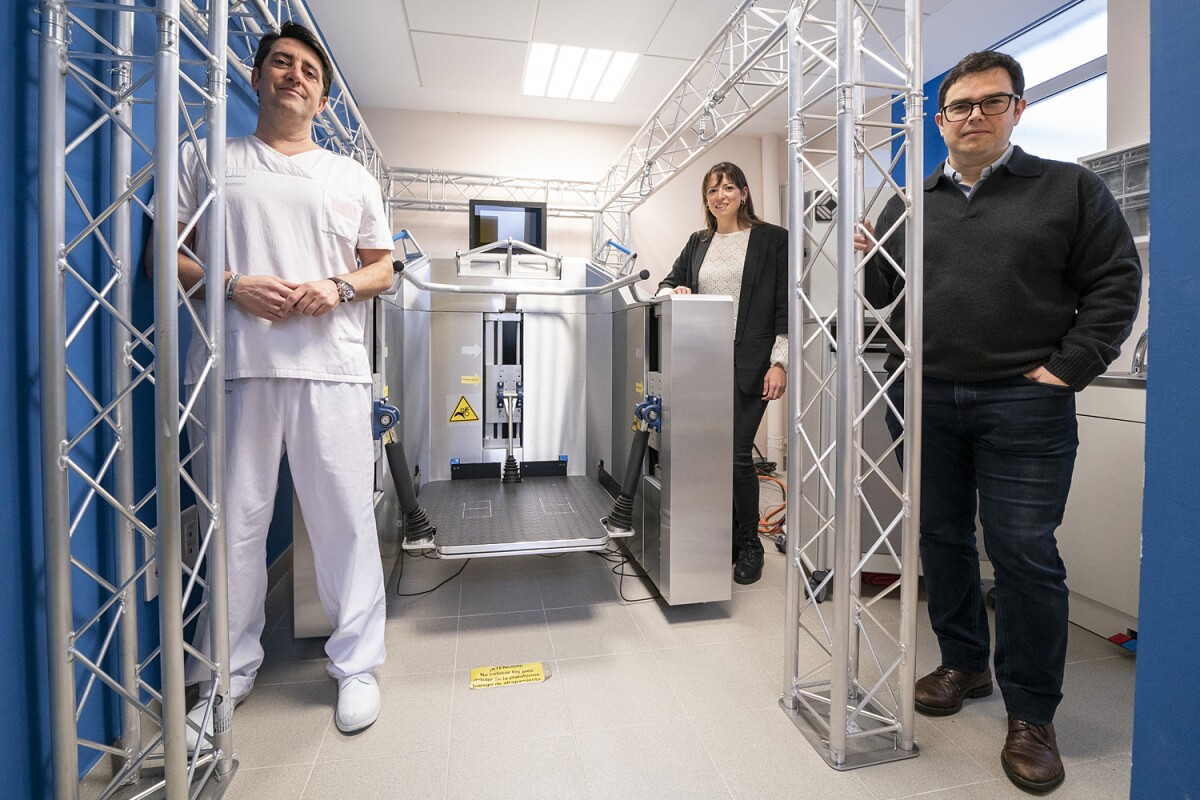Another possibility here.
The pictures show a Balance Master for testing your balance.
I was tested in one of these 4 weeks post-stroke. The force plates I was standing on could move side to side, front to back and tilt in various directions, all the while the three sides; front of you and each side were moving around. You were strapped into a harness to catch you when you fall. After it was all done my PT ran my scores thru the universe of results and at that time my age of 50 results were better than the average 50-year-old male. I just told him I would really have enjoyed that testing challenge when I was healthy. It's like kneeling on a yoga ball for balance practice. This was all absolutely necessary for keeping upright in a squirrely whitewater canoe. My favorite was a Mad River Outrage. Ok, feeling sorry for myself again.
Ask your competent? doctor which one will recovery your balance better.
Balance-assessing rig is kind of like a mechanical bull for stroke patients

When someone has suffered a stroke, the resulting partial paralysis and/or loss of strength often leaves them with a poor sense of balance. A new rehabilitative platform could help in the recovery process, by objectively assessing what's known as their "center of pressure."
Ordinarily, as a stroke patient is learning to regain their sense of balance, a therapist assesses how stable they appear to be when walking, standing, or performing other activities. One problem with this approach lies in the fact that it's subjective – different therapists may have different ideas of what constitutes a significant balance impairment. Even a single therapist's assessment may vary from day to day, depending on factors such as their mood.
That's where the new mobile platform comes in.
Designed by a team of scientists from Spain's University of the Basque Country, it repeatedly and objectively measures and monitors the patient's center of pressure.
"Let’s imagine we are standing while traveling on a bus," says Assoc. Prof. Francisco Campa, one of the team members. "When the bus moves off or brakes, the body, in order to balance itself, distributes its weight forwards and backwards supported by the soles of the feet against the floor. The resultant point of this force is known as the center of pressure, and the study of its movement enables a person's balance to be assessed."
As a patient stands on the platform, its powered floor moves up and down while also tilting fore, aft, and to either side. As the person attempts to keep their balance by compensating for those movements, four pressure sensors beneath the floor measure the changing force and distribution of their center of pressure.
Importantly, the exact pattern of floor movements – including their amplitude and speed – can be repeated for each assessment session. And of course, the patient's performance and progress are assessed by an algorithm that doesn't change from day to day.
The platform has already been clinically trialed at Spain's Gorliz Hospital, with promising results. It is hoped that once the technology has been developed further, it could be used not only by stroke patients but also by people suffering from vertigo problems, or by amputees adapting to new prostheses.
A paper on the research was recently published in the journal Mechatronics.
Source: University of the Basque Country

No comments:
Post a Comment